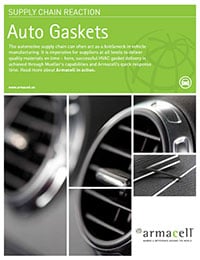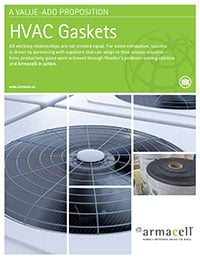
The automotive industry is rapidly changing. One of the most significant changes recently is the focus on reducing the output of pollution originating from materials used while manufacturing vehicles.
To do this, many manufacturers are looking for low VOC materials, which help reduce the environmental damage done by chemical pollutants. These materials are now a point of focus for many automotive manufacturers.
In this guide, the automotive experts at Mueller are going to examine what VOCs are, why they matter in the automotive industry, and how low VOC materials can be used to reduce emissions
What Are VOCs?
VOCs are volatile organic compounds, which are airborne chemicals emitted from certain materials that are harmful when inhaled.
They are created as the result of high VOC materials such as adhesives, rubbers, plastics, foams, fabrics, and leathers off-gassing and vaporizing, which put those chemical emissions into the air. Adhesives are the most prominent source of VOC emission.
According to the Environmental Protection Agency (EPA), VOCs can cause eye, throat, and nose irritation, in addition to other symptoms like nausea.
VOCs are also harmful to the environment, creating issues such as smog. This pollution is driving many manufacturers to seek methods for reducing the release of these toxic substances.
Not all VOCs are harmful, but the emissions from toluene and formaldehyde are hazardous to inhale and release to the environment.

Why Do VOCs Matter in the Automotive Industry?
VOCs are present in almost all aspects of our day-to-day life, but there has been a recent push to acknowledge its effects on the automotive industry. The most prominent type of VOC in this area might not be what you think, either.
The “new car smell” that many people enjoy is actually a VOC. This scent is created by materials off-gassing and being released into the air, which recent studies have shown to be potentially hazardous to drivers. These fumes can cause headaches, nose and throat irritation, and disorientation.
The off-gassing VOC emissions from adhesives and other materials are triggered and accelerated by high temperatures. This is why the “new car smell” is so prominent when you first get a new car because the materials have not vaporized the chemicals they hold yet.
There is an increasing concern that VOCs like the “new car smell” can negatively affect the air quality inside cars and other vehicles, and manufacturers are starting to take notice. Fortunately, there are materials currently being developed that can prevent these issues and reduce the threat posed to drivers and the environment alike.
How Can I Prevent VOC Emissions in My Products?
There are a few ways that automotive manufacturers across the globe are starting to decrease VOC emissions that you can implement, as well.
Use Low VOC Materials
The first step to take is the most obvious one. It is vital to research and invest in new materials that meet low VOC requirements for the automotive industry.
While there is a smaller market for low VOC materials than there is for the rest of the existing materials, there are still options.
In an article detailing the effects of VOCs on the automotive industry, 3M discusses how low VOC thermoplastics and thermosets are leading the way as replacement materials for higher VOC materials, as well as listing some of their own low VOC adhesives. You can also look at renewable materials to reduce VOC emissions.
The main issue when it comes to VOC emissions in the automotive world is the use of high VOC adhesives. These materials are where many of the chemicals are released from, and therefore should be the highest priority when looking to decrease VOC emissions.
It is crucial to make sure you are still meeting the application’s specifications with these new materials. Reducing the emissions your materials produce is vital, but it is more important to maintain a level of quality with the finished product.
Lower Emissions Before Vehicle Release
Besides using low VOC materials, there is another way you can lower VOC emissions before vehicles even reach the sales lot.
If you test materials and expose them to heat and air before releasing a vehicle, those materials will out-gas in a controlled environment. This will result in fewer chemicals being released into the atmosphere and a safer overall experience for people operating the vehicle.
This testing method is effective with high and low VOC materials, but the use of materials with low emission levels is preferred.

Why Are Low VOC Materials Important?
When you research materials for an automotive application, choosing ones rated for low VOC emissions is very important. The automotive industry now recognizes high VOC materials as harmful, so it’s important that manufacturers adapt and change the materials we use.
People spend a lot of time in their cars, so ensuring that they have the safest environment possible is incredibly important. Focus on using adhesives, foams, rubbers, fabrics, and plastics with low VOC in your automotive interior applications to provide a safer environment for drivers and passengers, all while reducing atmospheric pollution as well.
Use this guide to enhance your low VOC capabilities and take the steps needed to provide a safer and more eco-friendly transportation experience for everyone.






